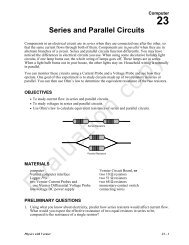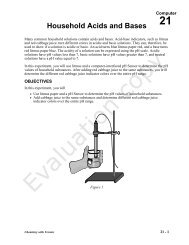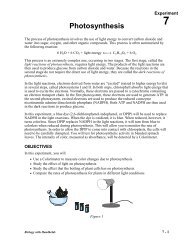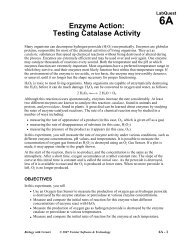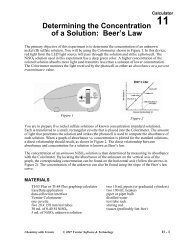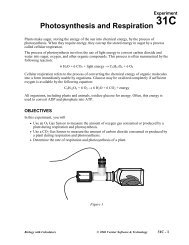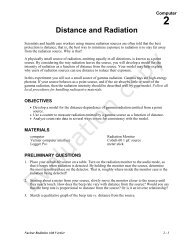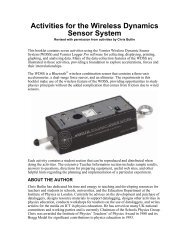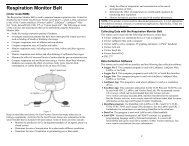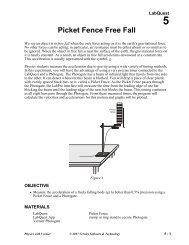No Dumping - Vernier Software & Technology
No Dumping - Vernier Software & Technology
No Dumping - Vernier Software & Technology
You also want an ePaper? Increase the reach of your titles
YUMPU automatically turns print PDFs into web optimized ePapers that Google loves.
Part IV The Physical Appearance of the Samples<strong>No</strong> <strong>Dumping</strong>11. For each sample, use the balance to measure out 50 g on a piece of filter paper labeled withthe sample number.12. Examine the samples through the magnifying glass. In the Evidence Record, make a sketch ofeach sample and write down some notes about its appearance.Part V Determining the Water Absorbency of the Samples13. Determine how well each sample absorbs water.a. Carefully lift the sample 1 filter paper and soil that you prepared in Step 11.b. Place the filter paper and soil into a funnel.c. Have your lab partner hold the funnel over a 400 mL beaker.d. Measure 100 mL of distilled water in the graduated cylinder, and pour it through the soil.Collect any water that drains through in the beaker.e. Let the sample drip for 60 seconds.f. Pour the water from the beaker into the 100 mL graduated cylinder.g. Subtract the volume of water in the graduated cylinder from the 100 mL you poured intothe soil. This is the amount of water absorbed by the soil. Write this amount in the WaterAbsorbency column of your Evidence Record.h. For each remaining soil sample, empty the funnel, 400 mL beaker, and graduated cylinderand repeat Steps 13a–13g.EVIDENCE RECORDSampleGeneralAppearanceWaterAbsorbancy(mL/50 g)pHConductivity(µS/cm)1234Crime SceneForensics with <strong>Vernier</strong> 8 - 3




